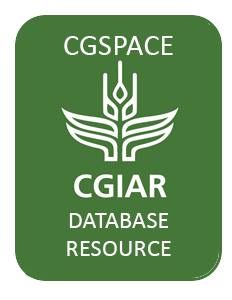Mission
To reduce hunger and poverty, and improve human nutrition in the tropics through research aimed at increasing the eco-efficiency of agriculture.
People
CIAT’s staff includes about 200 scientists. Supported by a wide array of donors, the Center collaborates with hundreds of partners to conduct high-quality research and translate the results into development impact. A Board of Trustees provides oversight of CIAT’s research and financial management.
Values
- Shared organizational ethic
- We respect each other, our partners, and the people who benefit from our work. We act with honesty, integrity, transparency, and environmental responsibility in all of our joint endeavors.
- Learning through partnerships
- We work efficiently and pragmatically together and with partners. Considering our diversity to be a key asset, we adapt readily to change and strive to improve our performance through continuous learning.
- Innovation for impact
- We develop innovative solutions to important challenges in tropical agriculture, resulting in major benefits for the people who support, participate in, and profit from our work.
Members:
Resources
Displaying 841 - 845 of 958Cosecha y beneficio de la semilla de Andropogon gayanus
Se esquematizaron metodos alternativos para llevar a cabo la cosecha y el beneficio de la semilla de Andropogon gayanus. La cosecha puede ser totalmente manual, total o parcialmente mecanica. La cosecha manual ofrece los mas altos rendimientos de semilla pura con un contenido aceptable de material inerte, y obtenida sin recurrir a ningun acondicionamiento mecanico. Este metodo de cosecha esta restringido, sin embargo, a regiones donde haya mano de obra abundante y disponible.
Agroecozoning for upland rice: the CIAT experience in Latin America
Anilisis economico de un ensayo de fertilizacion en yuca
In May 1980 the soil section of CIAT's cassava program established a fertilization trial with 3 cassava var. [Barranquena (regional), M Col 113, and CMC 921 to measure its effect on yield and establish optimum levels from an economical point of view. The trial took place in Mondomito and Agua Blanca, municipality of Santander de Quilichao, Cauca (Colombia). Twelve levels of NPK (0-0- 0; 0-100-100; 50-100-100; 100-100-100; 200-100-100; 100-0-100; 100- 50-100; 100-200-100; 100-100-0; 100-100-50; 100-100-200; 200-200- 200) were applied. Partial budgeting was used for the economic analysis.
Nueva guia para la conduccion de pruebas regionales de yuca
A guideline for carrying out regional trials in cassava is given, including necessary steps (identification of collaborators, selection of sites, identification of person in charge, planting and harvesting season, exptl. design, plot size, and border rows); the technology used (selection and treatment of cuttings, plant density, land preparation, planting position, application of herbicides and fertilizers, pest and disease control); necessary visits (a min. of 7); and final agronomic trials to determine optimum density and age of var. at harvest.
Yuca en cultivos asociados: Manejo y evaluacion
The management of cassava intercropping and its evaluation are described. Multiple cropping systems are defined: consecutive cropping and intercropping (mixed intercropping, row intercropping, strip intercropping, and relay intercropping). Basic biological and nutritional aspects of multiple cropping are analyzed and cassava intercropping systems practiced throughout the world (Latin America, Africa, and Asia) are described.



